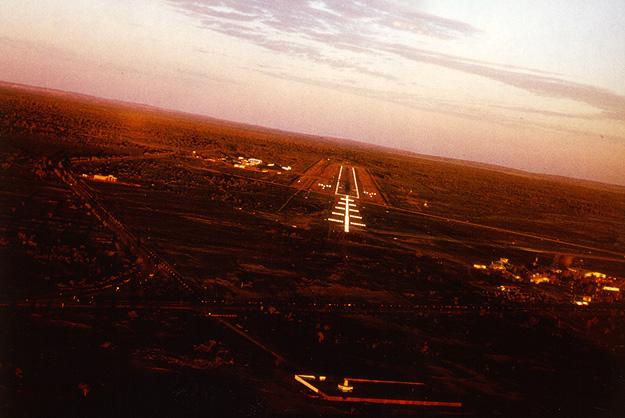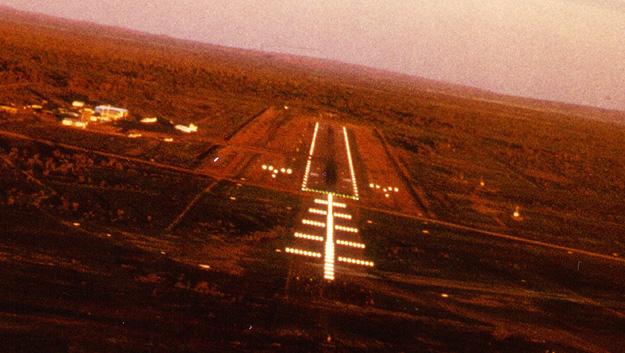
The
full range of visual approach lighting systems for a precision approach (ILS)
runway can be seen in this atmospheric dusk shot of the approach to Alice Springs'
Runway 12 some time in the late 1970s or early 1980s.
High Intensity Approach Lights
The High Intensity Approach Lights (HIAL) are designed to smooth the transition from instrument to visual flight on a precision instrument approach in conditions of low cloud or reduced visibility. The longitudinal array of lights provides a lead in to the runway centreline, whilst the lateral 'bars' provide a roll reference. The array shown here is the simplest form of HIAL - larger arrays are used at some major capital city airports. Click here to read more about HIAL.
Runway Lights
A lateral bar of green lights (difficult to distinguish in this reproduction) marks the beginning of the runway proper and white sideline lights delineate the runway edges. A lateral bar of red lights (also difficult to distinguish) marks the far end of the runway. Once again, more sophisticated arrays of runway lights, providing touchdown zone markings, are in use at some major airports.
Visual Approach Slope Guidance
Visual approach slope guidance is provided by the two Australian-designed T-VASIS arrays on either side of the runway threshold. In this instance the approach is rather low as the T-VASIS is indicating two lights 'fly up'. Some smaller airports have a single T-VASIS array on one side of the runway only, known as Abbreviated T-VASIS (or AT-VASIS). Click here to read more about T-VASIS.
Of additional interest in this photo is the VOR antenna in the centre foreground of the photo above.

(Photo:
CAHS collection)
Return to the main Communications and Navigation Index